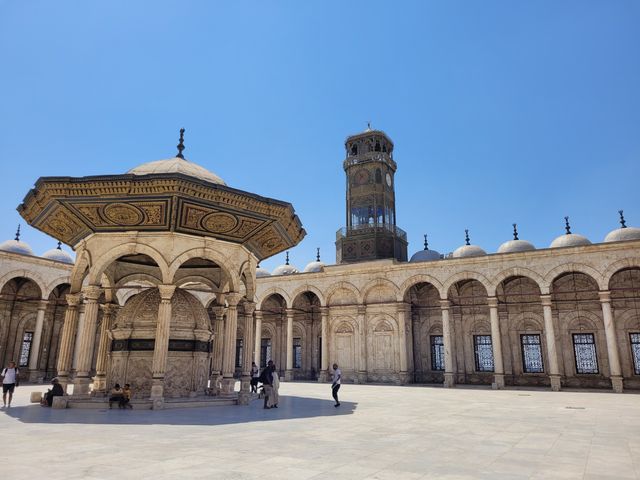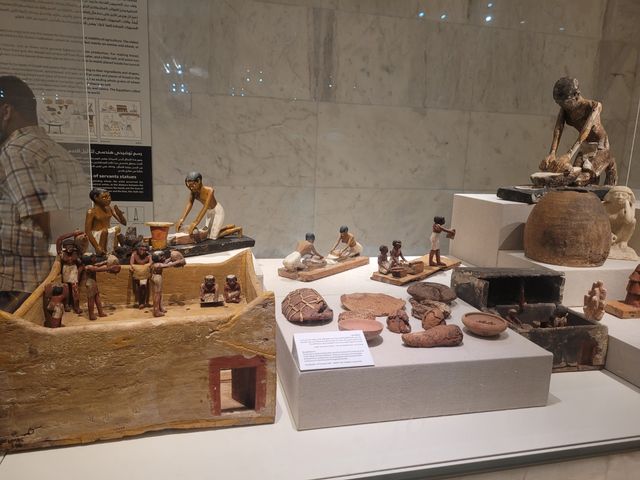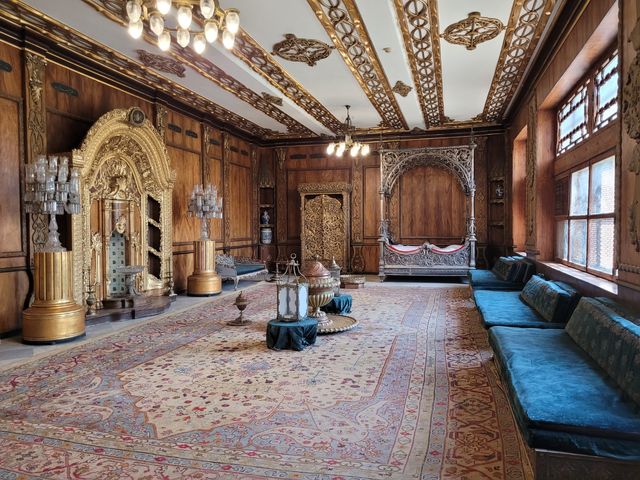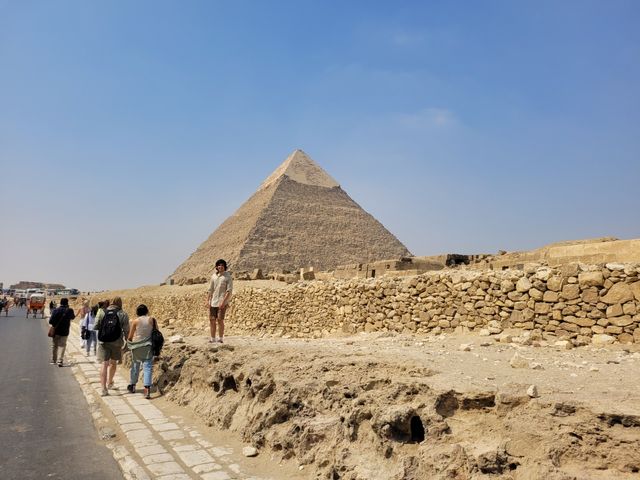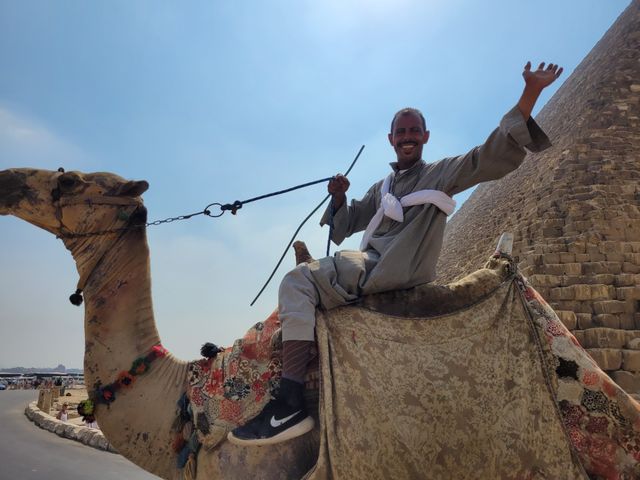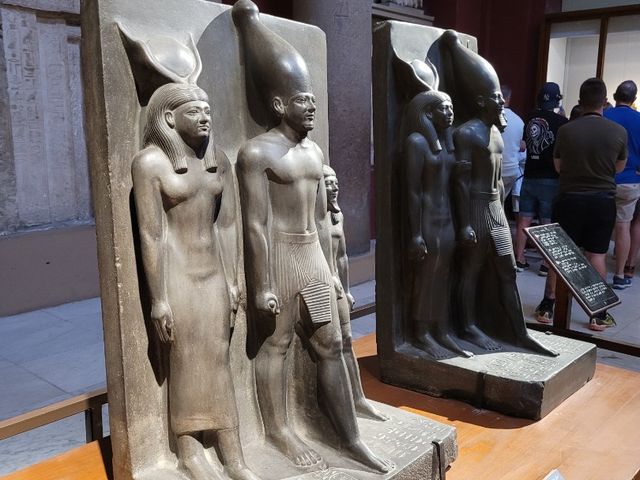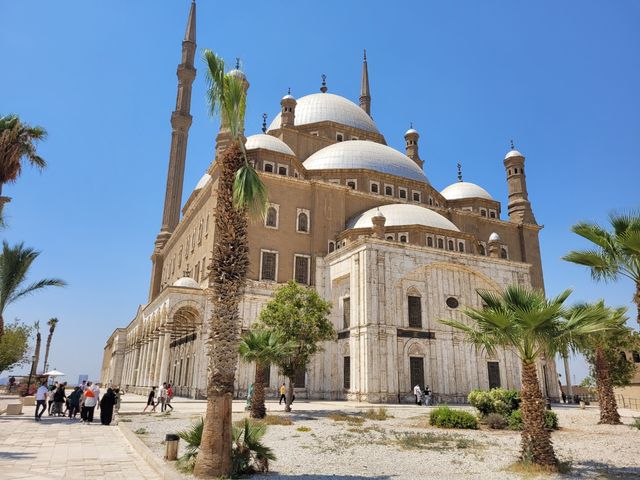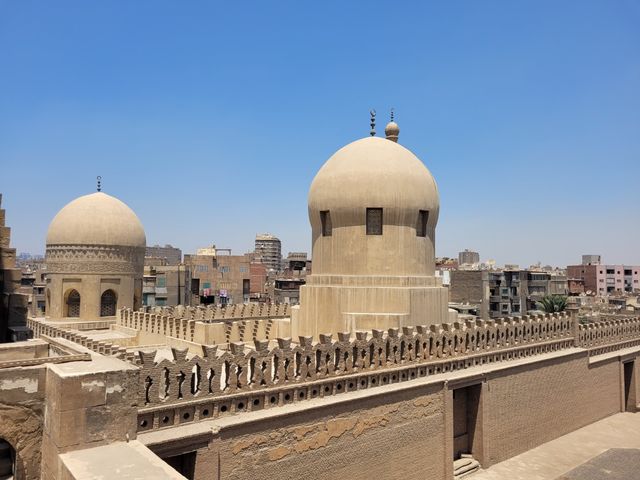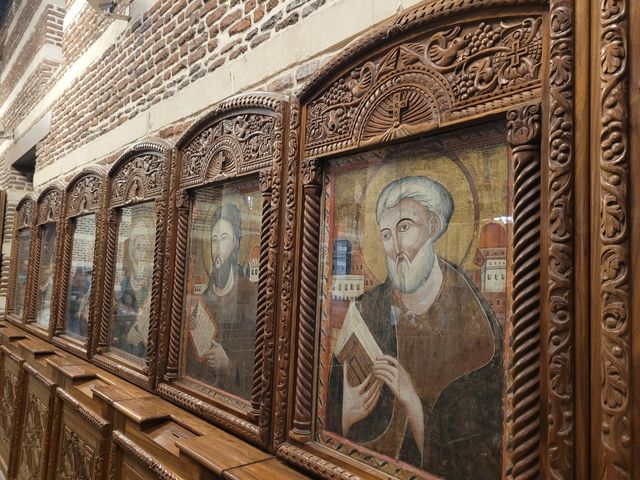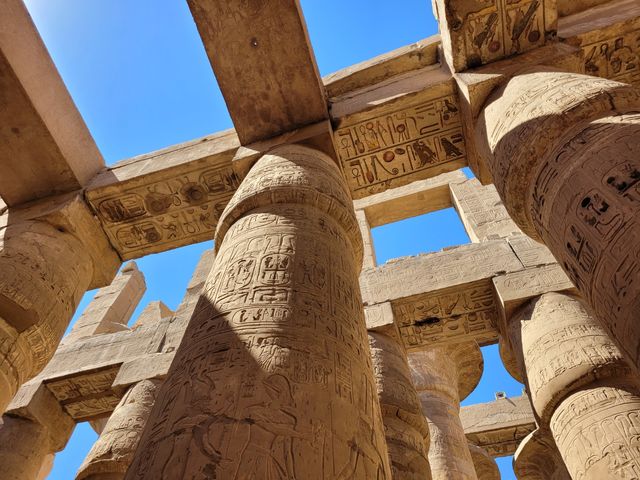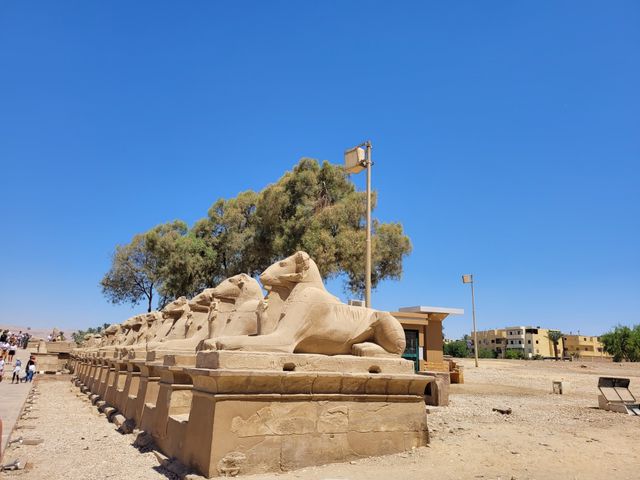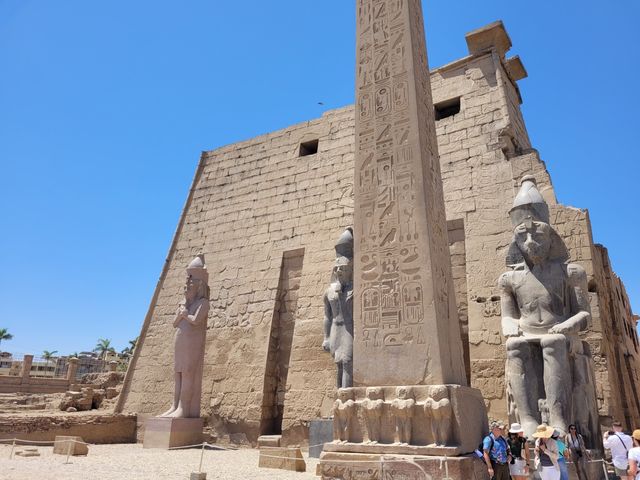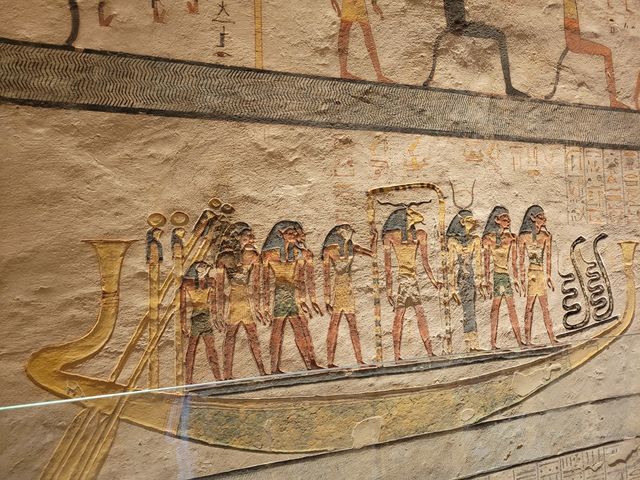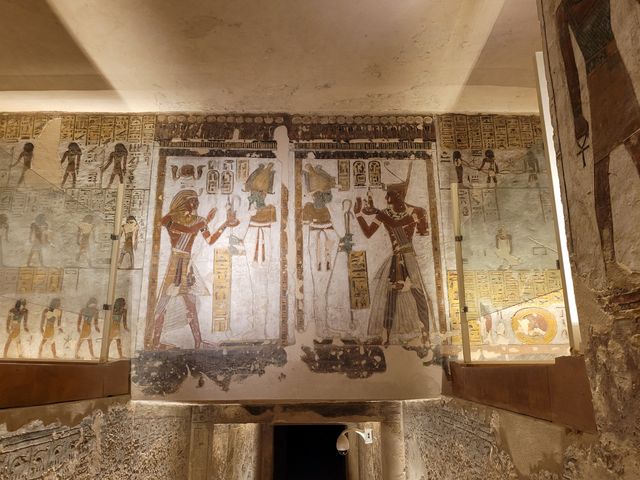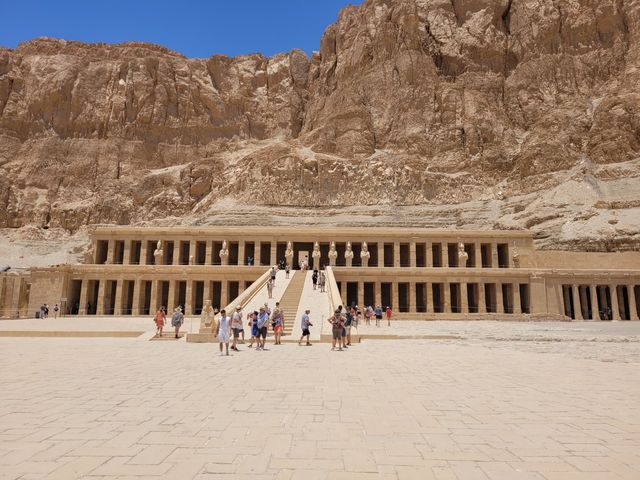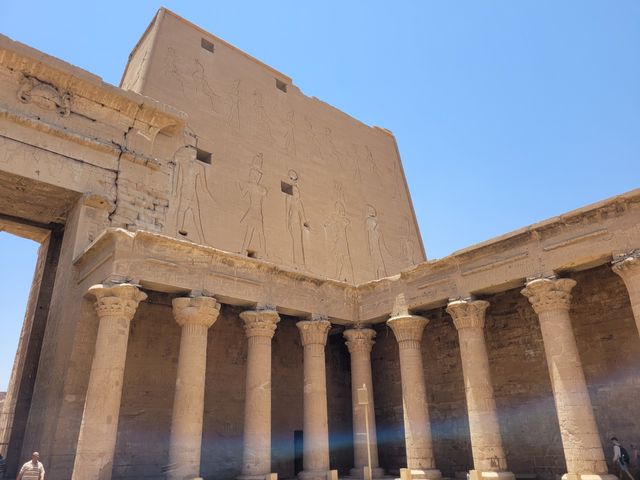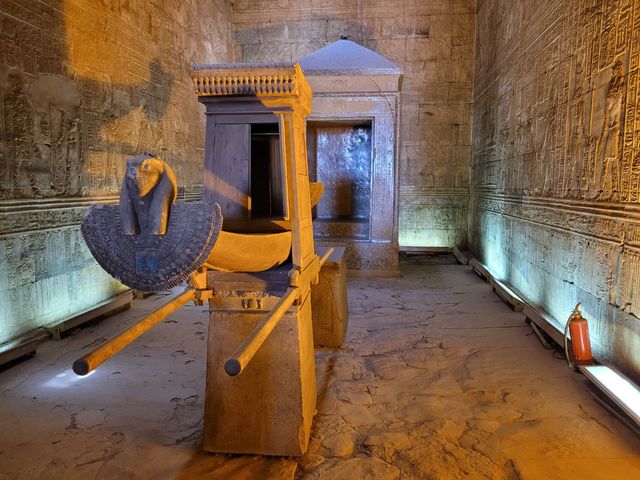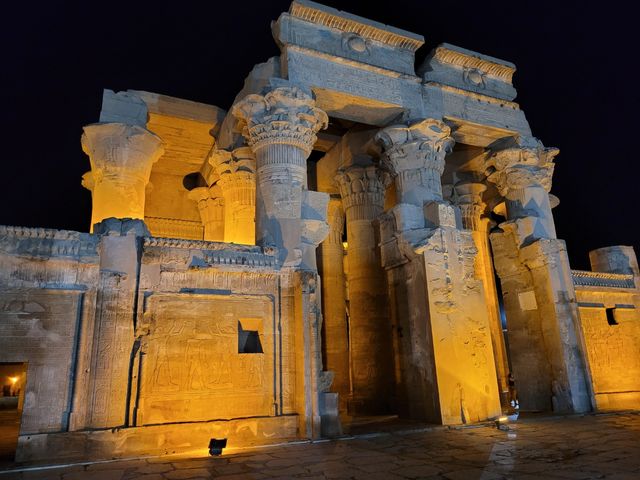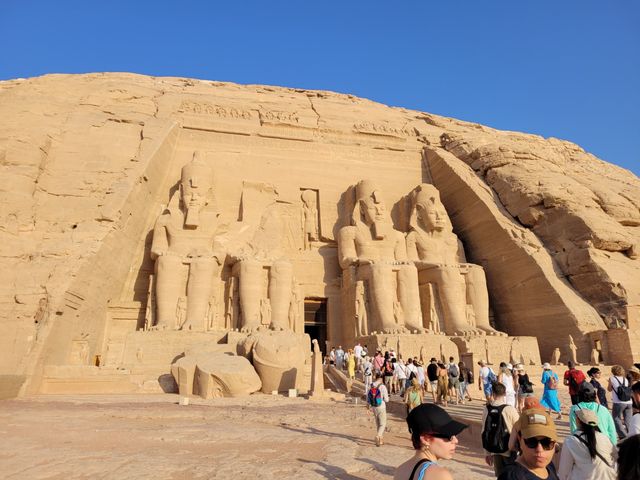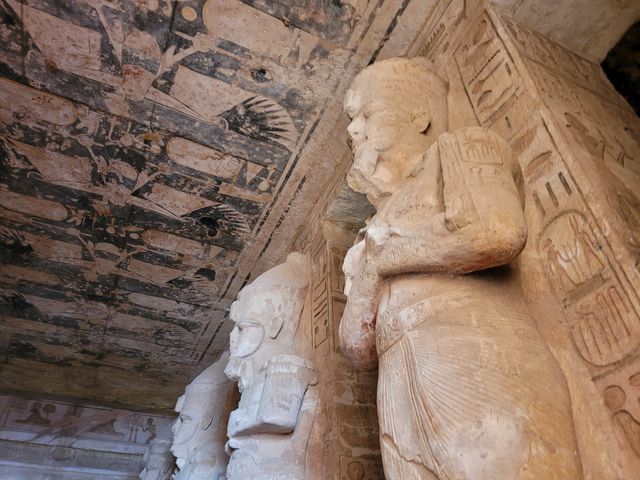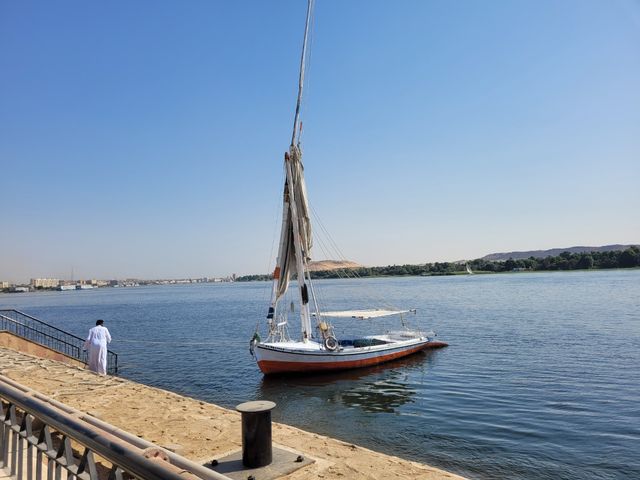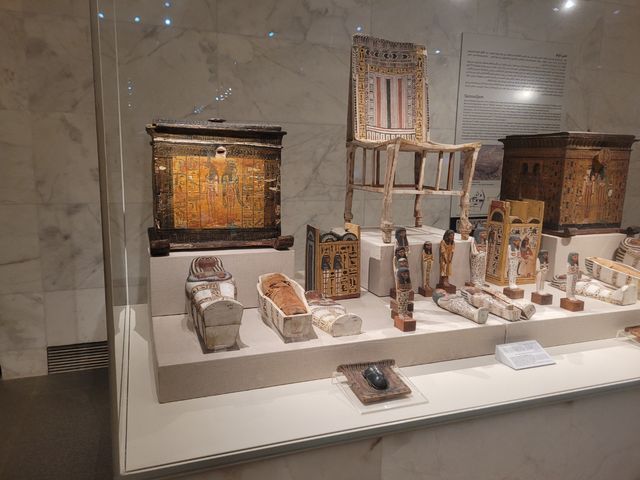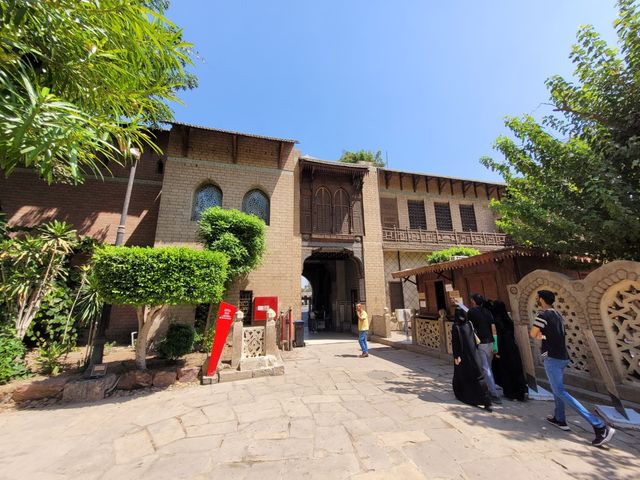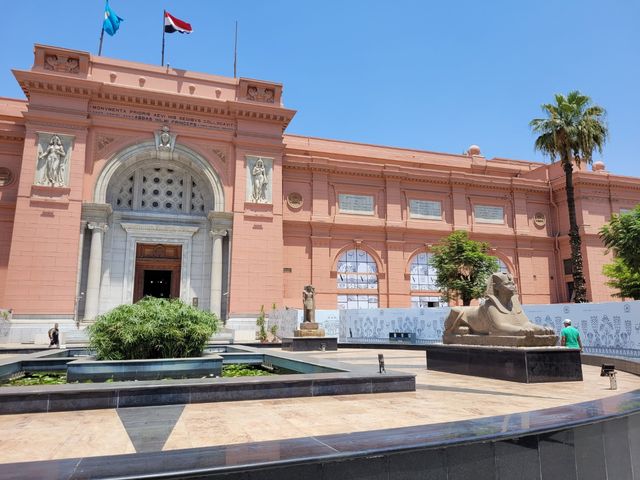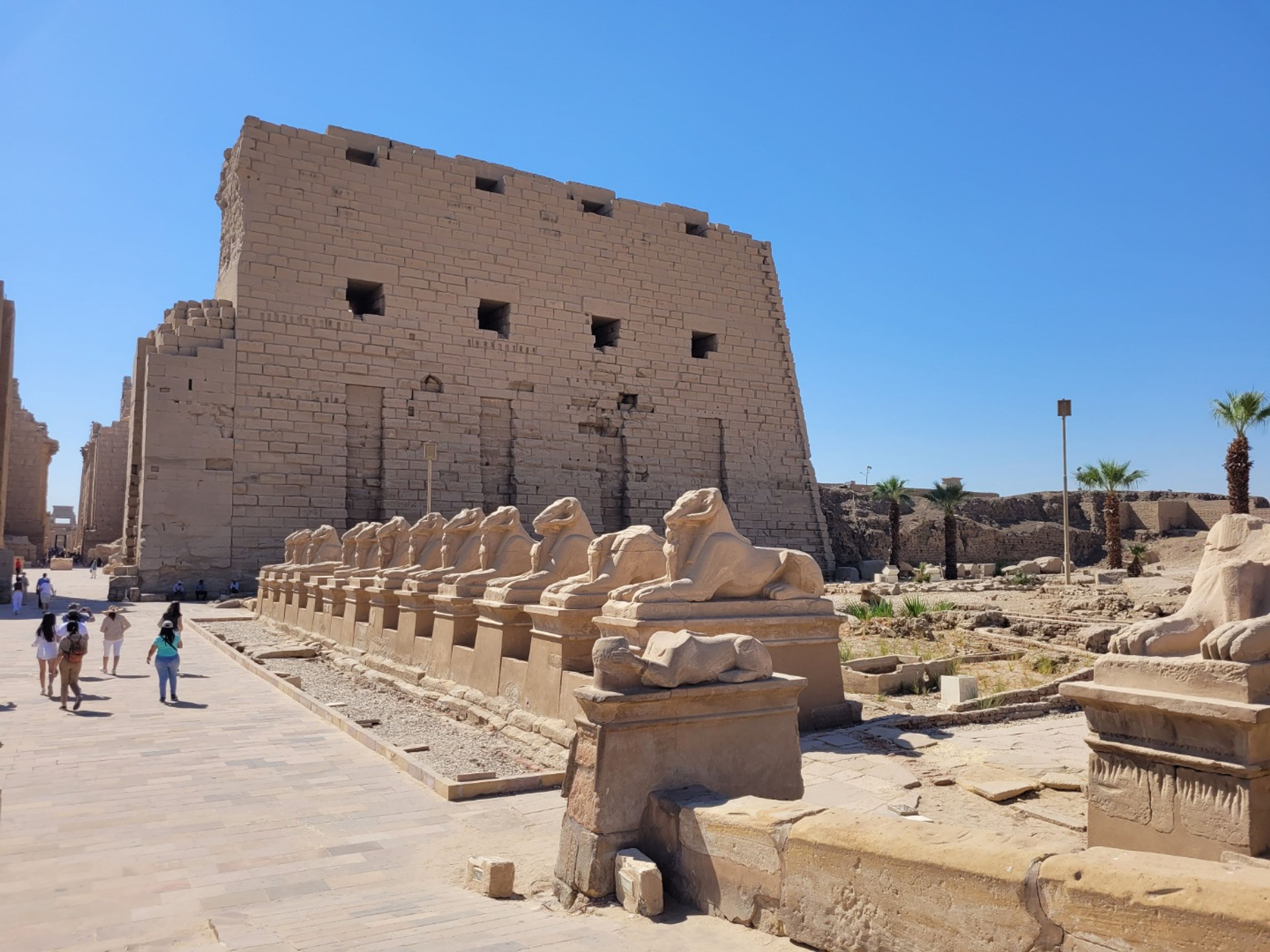
CLASSIC EGYPT Private Tour.
Classic Egypt will show you the dazzling and beautiful cities of this region full of history, culture, art and stunning landscapes.
CLASSIC EGYPT Private Tour.
(CAIRO - LUXOR - ESNA - EDFU - KOM OMBO - ASWAN - CAIRO).
Days of arrival in Egypt prior to the program departure: Wednesday and Friday.
Iconic Cities & Timeless Landscapes of Egypt. Embark on a journey through the legendary land of the Pharaohs, where history, culture, and breathtaking landscapes come together in an unforgettable experience. Explore some of the world’s most iconic monuments and archaeological treasures, each telling the story of one of humanity’s greatest civilizations. Stand in awe before the Three Pyramids of Giza, eternal symbols of ancient Egypt, and marvel at the enigmatic Great Sphinx guarding the sands of time. Visit the Valley Temple of Pharaoh Kefren, a masterpiece of ancient architecture, and discover priceless artifacts at the Egyptian Museum of Pharaonic Art, home to treasures that bring Egypt’s glorious past to life.
In Luxor, walk through the monumental Temples of Karnak and Luxor, both architectural wonders showcasing the grandeur of the New Kingdom. Journey into the Valley of the Kings, resting place of Egypt’s most powerful pharaohs, and admire the unique elegance of the Temple of Queen Hatshepsut, dedicated to one of the few female rulers of ancient Egypt. Nearby, the Colossi of Memnon stand as eternal guardians of the Theban necropolis. Sail along the Nile to witness the Temple of Edfu, dedicated to Horus, and the Temple of Kom Ombo, a rare double temple honoring Sobek and Horus. In Aswan, admire modern engineering at the High Dam, and uncover the mystery of the Unfinished Obelisk of Queen Hatshepsut, which offers insight into the ancient techniques of stone carving.
This immersive journey through Egypt combines iconic cities, majestic temples, and awe-inspiring landscapes, ensuring a travel experience filled with wonder, discovery, and unforgettable memories.
- Since they were created more than 4000 years ago, the pyramids of Egypt have been the most prodigious and emblematic monuments of the Egyptian civilization, as well as the oldest and unique wonder that is preserved, and in particular it is worth noting, THE THREE PYRAMIDS OF GIZA, the tombs of the kings Cheops, Khafre and Menkaure, whose construction dates back, for the vast majority of scholars, to the period called the Old Kingdom of Egypt.
- THE GREAT SPHINX OF GIZA is an imposing sculpture with a human head and a lion's body located next to the Pyramids of Giza. It is one of the most extraordinary and iconic monuments not only in Egypt, but in the entire world.
- THE TEMPLE OF THE VALLEY is the name of a construction attached to each pyramid. It acted as an entrance to the funerary complex and was linked to the funerary temple (located next to the pyramid) by a causeway. The best known Valley Temple is that of Khafre, located in his funeral complex in Giza; 500 m from the Pyramid of Khafre, it is close to the Great Sphinx and almost intact, having been covered by sand until the 19th century.
- THE EGYPTIAN MUSEUM OF PHARAONIC ART houses the largest collection of objects from the time of Ancient Egypt; possesses more than 136,000 classified objects from different eras of Egyptian history: Tinite, Old Kingdom, Middle Kingdom, New Kingdom, Third Intermediate Period, Late, Hellenistic and Roman, surpassing other museums not only for the quantity, but also for the importance of many of them.
- KARNAK is the name of a small town in Egypt, located on the eastern bank of the River Nile, opposite Luxor, the area of ancient Thebes, which housed the most important religious complex of Ancient Egypt.
- THE TEMPLE OF LUXOR Located in the city that bears its name and discovered in 1884, the Temple of Luxor is one of the most spectacular temples in Egypt and the most important monument in Luxor. The Temple of Luxor was built between 1400 and 1000 BC. by the pharaohs Amenhotep III and Ramses II, the first built the inner part and the second the outer enclosure, adding the façade, the colossi and the obelisks.
- THE TEMPLE OF HATSHEPSUT is located in El Deir El Bahari, on the West Bank of the Nile, opposite the city of Luxor, in the south of the country. It was built on the orders of Queen Hachepsut, daughter of Tuthmosis I, who reigned Egypt for 20 years during the 18th dynasty (1490 - 1469).
- THE VALLEY OF THE KINGS is the place where most of the pharaohs of the New Kingdom were buried, that is, from that time when ancient Egypt was an empire that extended along the eastern coast of the Mediterranean ( the 18th, 19th and 20th dynasties). It was there that they were buried, for example Thutmose III, Tutankhamun or Ramses II.
- LOS COLOSOS DE MEMON are two gigantic stone statues representing Pharaoh Amenhotep III, who ruled during the 18th Dynasty of Egypt. They are located on the west bank of the Nile, opposite the Egyptian city of Luxor, near Medinet Habu and south of the great Theban necropolis. The two twin statues show Amenhotep III in a seated position; his hands rest on his knees and his gaze is directed east, toward the river Nile and the rising sun.
- THE TEMPLE OF EDFU was buried under centuries of sand and silt until the 19th century, when the French Egyptologist Auguste Mariette rediscovered the site. The complex is one of the best preserved sites in Egypt today; its architecture is very intact, and the building contains a large number of legible inscriptions on its walls.
- THE TEMPLE OF KOM OMBO an unusual double temple built during the reign of the Ptolemaic Dynasty, in the Egyptian city of Kom Ombo. In the period of Roman domination, some extensions were made. The construction is unique due to its double design, which means that there were duplicate entrances, courtyards, halls, chapels and shrines for two gods: Sobek and Haroeris.
- THE ASWAN DAM OR ASUAN DAM is a mega construction, designed in 1956 and built between 1959 and 1970 by the Egyptian and Soviet governments, in order to end the floods that occurred in the territory of the under the Nile as a consequence of the sudden increase in the flow of the Nile.
- THE UNFINISHED OBELISK OF THE QUEEN HATSHEPSUT, female pharaoh of Egypt, is found in the granite quarries at Aswan in Egypt "Misr", where the pharaohs removed blocks for the construction of temples, statues, obelisks and pyramids.
HIGHLIGHTS
- Departure from CAIRO
- Private package
- History & cultural tour
- Offered in Spanish and English
- 5 Stars Rating
included
- 4 Nights of full board cruise on the ship from Luxor to Aswan (M/S Beau soleil Or similar) without drinks category 5* Luxury Stars.
- 3 Nights at the hotel in Cairo on a Bed and Breakfast basis (Barceló Cairo Pyramids or similar) Category 5* Stars.
- All transfers from the hotel or the airport and vice versa in air-conditioned (private) coaches.
- Spanish-speaking cultural Egyptologist guide (private) during all visits included. (with individual bookings, there is a private guide for Cairo tours and another private guide for Luxor and Aswan tours)
- All visits included in the itinerary The Three Pyramids of Giza, The Great Sphinx, The Temple of the Valley of Pharaoh Kefren, The Egyptian Museum of Pharaonic Art, The Temples of Karnak, The Temple of Luxor, The Temple of Queen Hatchepsut, The Valley of the Kings, The Colossi of Memnon, The Temple of Edfu, The Temple of Kom Ombo, The High Dam of Aswan, The Unfinished Obelisk of Queen Hatchepsut.
VERY IMPORTANT NOTES:
- The hotels and cruise ships indicated in the program will be confirmed in principle. If, in exceptional circumstances, it is necessary to change them, our agency will assign other hotels and cruise ships on the Nile River of a similar or higher category.
- The general itinerary of the program may vary and be modified depending on the itinerary and departure dates of the Nile River cruise.
- The museum included in the Cairo excursions is the Egyptian Museum of Pharaonic Art. Should you wish to substitute this visit with the Grand Egyptian Museum (GEM), a supplement of = USD 40 per person will apply.
- Alternatively, if you would like to visit the GEM as an additional tour (in addition to the Egyptian Museum), the cost will be = USD 65 per person will apply.
- If you wish to upgrade the hotel or cruise category, the rate will be adjusted accordingly.
- The cultural Egyptologist guide service for the program is offered in Spanish. Services in English and other languages (subject to availability) can be provided at an additional cost.
not included
- International flights or domestic flights. (The price of domestic flights will be according to the class of the seat and the day of the issue).
- The entry visa to the country with assistance in Spanish and transfer to the hotel = $ 30 per person.
- The service fee + security plan + general tips for "porters, drivers, restaurants… ..etc." + cruise crew = $ 50 per person. (This value does not include the tip for the tour guide's service).
- All drinks and Any extras or visits not mentioned in the program.
- Telephone calls, laundry services throughout the trip or any other personal expense not mentioned.
- The guide's tips are set aside at the discretion of the client.
- Excursion to the Temple of Abu Simbel.
IMPORTANT NOTES:
- Rates expressed in American Dollars.
- Rates per person according to selected accommodation.
- Services provided in Private.
- Services provided with the accompaniment of a permanent guide.
- Services subject to availability at the time of booking.
- Services reserved and not taken, will not be reimbursed.
- Non-commissionable NET rates.
- Exclusive Rates for International Wholesale Agencies.
- Tax-exempt rates for foreign passengers.
- In case of not having availability in the planned hotels, their services will be confirmed in a hotel of a similar category.
RECOMMENDATIONS:
- Bring a fanny pack for money and documents. There is less risk of theft than anywhere in the world. Egyptians abhor stealing, but there are not only Egyptians.
- Bring a small backpack for excursions, for water, camera, light jacket.
- It is advisable to bring a compass, a hand-cranked flashlight, a notebook and a pen.
- Bring a coat for the night on the boat and some temples that are visited at night.
- Bring loose change, about 10 euros for the first days. In Egypt, vendors and guides can exchange coins for small bills (5 and 10 euros or dollars).
- In hotels there are banks and money can be withdrawn or exchanged. The change is the official one.
- Leave space in the suitcase for your purchases that always come back more loaded. On boats and hotels there is a laundry service.
- Comfortable footwear to walk a lot, better if it is an ankle. Although it is not "adventure tourism" and children or very old people go, we visit places with stones, sand, tunnels, stairs ...
- Clothes: on the boat and hotels they wash clothes, but it is better to bring enough for a single wash in boat or hotel ...
- Check-in time at almost all hotels in Egypt is at 2:00 p.m. and check-out time is at 12:00 p.m. Photography during your Egypt Tours is allowed in most historical sites and museums, but in some museums like the Egyptian Museum and the Valley of the Kings in Luxor there is a fee.
- During your Egypt Holidays Try eating "Fool" Egyptian beans and "Koshary", a traditional Egyptian dish made from different ingredients.
- When visiting mosques it is recommended to wear modest clothing, remove shoes and for women to cover their hair.
- Credit cards are widely used in hotels, restaurants and cafes that are in tourist places. Visa and Master Card are the most used.
- There are several transportation options available in Cairo, the fastest and easiest is to take a taxi. White taxis, which use an odometer, would be a good option if you want to go anywhere near Cairo. It is advisable to avoid taking the black and white taxis, since they do not use the meters and the drivers always ask for an exaggerated rate. There is also the service of ordering an Uber and there is the subway to go from one place to another within Cairo. Although the metro can be quite crowded during rush hours.
- Most of the historical monuments and museums in Egypt open at 9 am until 5 pm. Historic outdoor sites, such as the Pyramids of Giza, are open from 8 am to 5 pm. Some museums have opening hours in the morning from 9 am to 4 pm. During Ramadan, the holy month of the Islamic calendar, keep in mind that these times will change significantly.
DIA 1CAIRO.
DIA 2CAIRO.
CAIRO Modern car or microbusBreakfast at the hotel. Departure to visit the necropolis of Giza, in it are the famous pyramids built by the pharaohs of the fourth dynasty Cheops, Khafre and Menkaure. Since they were created more than 4000 years ago, the pyramids of Egypt have been the most portentous and emblematic monuments of the Egyptian civilization, as well as the oldest and unique wonder that is preserved, and in particular it is worth noting, the three great pyramids of Giza, the tombs of the kings Cheops, Khafre and Menkaure, whose construction dates back, for the vast majority of scholars, to the period called the Old Kingdom of Egypt. It is worth mentioning that the Pyramids are not only the most important monuments in Egypt, but also the oldest in the world.
The great Sphinx and the temple in the valley of Pharaoh Khafre, are funerary constructions that were built under the orders of pharaohs of the fourth dynasty. The Sphinx was the first truly colossal piece of sculpture from ancient Egypt. The Egyptians would not carve statues of these proportions again until the reigns of the New Kingdom pharaohs, some some 1,200 years later. It was carved out of the natural bedrock at the very base of the Quefrén causeway in the shape of a real human head on a lion's body, symbolizing the power and strength controlled by the intelligence of the pharaoh. The Quefrén valley temple was built with megalithic blocks covered with red granite and the entrances to the temple were closed with huge single-leaf doors, probably made of cedar wood. The close association of the Sphinx with the Quefrén valley makes it more than likely that the Sphinx were carved for Quefrén. The sphinx is one of the great mysteries of all time and over several centuries there have been numerous speculations of archaeologists about its origin, its date of creation or its function.
Then we will do a tour in the Egyptian Museum of Pharaonic art passing through all the masterpieces of the same Museum. The Museum houses the largest collection of objects from the Ancient Egypt era; It possesses more than 136,000 classified objects from different eras of Egyptian history: Tinite, Old Kingdom, Middle Kingdom, New Kingdom, Third Intermediate Period, Late, Hellenistic and Roman, surpassing other museums not only for the quantity, but also for the importance of many of them. It is located in the center of Cairo, on Tahrir Square. The ground floor, entirely dedicated to sculpture, painted reliefs and sarcophagi, is dominated by the colossal statues of Amonhotep III and Queen Tie, located at the back of the great atrium. On the first floor, Tutankhamun's funeral trousseau is exhibited: the mask and gold sarcophagi, the jewels, the golden throne, the alabaster tableware and the furniture. The collections on display are so rich that they cannot be visited in a single day. Since Napoleon's military campaign in Egypt, European interest in Egypt has grown into a veritable mania for the pharaonic and the ancient.
At the end, Return to the hotel and night in Cairo.
DIA 3CAIRO.
CAIRO Modern car or microbusBreakfast at the hotel, free day with the possibility of optionally visiting the Saladin Citadel where the Alabaster Mosque is located and we will give a detailed conference on everything related to the Mosques.
The Citadel of Cairo was built under the commission of Saladin between 1176 and 1183 to protect the city from European attacks. The interior of the citadel houses beautiful mosques. Among them, the Sultan Hassan Mosque stands out, which is located on the western slope, near the main entrance of the fortification. In the southern part are the palaces and stables. The Alabaster Mosque, better known as the Mosque of Mohamed Ali, also stands out. The citadel is also home to the imposing Gawhara Palace (the Palace of Jewels), which is named after Gawhara Hanem, the last wife of Mohamed Ali. Built in 1814, it was the seat of the sovereign's administration and was used as the personal residence of the Egyptian leader. Beautiful gold inscriptions adorn the walls of this majestic Ottoman-influenced palace. One of its most eccentric elements is the Clock Room, where the shape of a clock has been used to decorate the walls.
The Alabaster Mosque was built by Sultan Mohammed Ali Pasha, who came to power in 1805. It is known as the Alabaster Mosque, since this material predominates in the Ottoman baroque style construction and reminds of Agia Sofia, in Istanbul as it was designed by the same engineer. With its impressive 52-meter-high dome, supported by four columns, and its two Turkish-style minarets, it broadly dominates the city landscape from the highest part of Cairo.There are four smaller domes at the four corners of the mosque. and more than 100 stained glass windows on the walls and domes that create a beautiful effect inside.
Near the Saladin Citadel we will visit the Coptic Quarter with the Church of Saint Sergius (where the Holy Family has taken refuge during their flight to Egypt) and the Ben Ezra Synagogue (where they found Moses in Egypt. Khan El Khalili Market, which is considered to be the most famous market in Egypt and the entire Middle East. No visit to Cairo is complete without a stop at Khan el Jalili Bazaar, where you will be transported back in time to an Arab souk. The market is located in the heart of Islamic Cairo, in a walled area with a medieval air in which you can breathe the magnificence of Mamluk architecture.Colorful bells, fabrics, handicrafts, jewelery, spices, perfumes, musical instruments and, of course, Egyptian souvenirs and gifts ... in the narrow streets that form the Jan market.
At the end, Return to the hotel and Accommodation.
DIA 4CAIRO - LUXOR.
CAIRO and LUXOR Modern car or microbus, Airplane, and Cruise BoatCairo – Luxor – Boarding the Nile Cruise. After breakfast at your hotel in Cairo, you will be transferred to the Cairo International Airport for your flight to Luxor, the ancient city often referred to as the world’s greatest open-air museum. Upon arrival, begin your journey with a direct visit to the Temples of Karnak, an extraordinary complex dedicated to the god Amun-Ra. Walk through the awe-inspiring Hypostyle Hall, a forest of 134 colossal columns, each adorned with intricate hieroglyphics and carvings that have stood for millennia. This monumental site embodies the power and devotion of ancient Egyptian civilization at its peak.
Continue to the Temple of Luxor, also known as the “Harem of Amun.” Once connected to Karnak by the grand Avenue of Sphinxes, this temple is a true masterpiece of pharaonic architecture, blending elegance and mysticism. As you wander its vast courtyards and admire statues, obelisks, and reliefs, you’ll feel transported back to the golden age of Egypt’s New Kingdom. After these inspiring visits, transfer to the pier and board the luxurious M/S Beau Soleil Nile Cruise, your floating hotel for the coming days. Settle into your comfortable cabin and enjoy the full-board service as you prepare for an unforgettable voyage along the legendary Nile River.
Accommodation: M/S Beau Soleil Nile Cruise (or Similar) / Full Board (FB), Meals: Breakfast (B), Lunch (L), Dinner (D) Overnight: On board in Luxor.
DIA 5LUXOR - ESNA - EDFU.
LUXOR, ESNA, and EDFU Cruise BoatLuxor West Bank – Valley of the Kings & Nile Sailing. After breakfast on board, set out to explore the West Bank of the Nile in Luxor, home to some of Egypt’s most awe-inspiring treasures. Begin with a visit to the legendary Valley of the Kings, the great necropolis of the New Kingdom. Here, more than 63 royal tombs carved deep into the rock have been discovered, including those of iconic pharaohs. Step inside three carefully selected tombs, marveling at the colorful hieroglyphs and well-preserved wall paintings that recount the pharaohs’ journeys to the afterlife.
Continue to the Temple of Queen Hatshepsut, a masterpiece of ancient Egyptian architecture. Built into the cliffs of Deir el-Bahari, this terraced temple is dedicated to the only woman who reigned as a pharaoh in her own right, and it stands as a powerful testament to her ambition and vision. Your morning concludes with a stop at the imposing Colossi of Memnon, two massive statues of Pharaoh Amenhotep III that have guarded the Theban necropolis for over 3,400 years.
Return to the cruise ship for lunch, and then begin the navigation toward Esna. Spend the afternoon relaxing on deck, admiring the serene beauty of the Nile’s landscapes as the ship passes through the famous Esna Lock, a unique experience of river navigation. In the evening, enjoy a delightful dinner on board as the cruise continues south toward Edfu, sailing under the starry Egyptian sky.
Accommodation: M/S Beau Soleil Nile Cruise / Full Board (FB). Meals: Breakfast, Lunch, Dinner.. Overnight: On board, sailing to Edfu.
DIA 6EDFU - KOM OMBO - ASWAN.
EDFU, KOM OMBO, and ASWAN Cruise BoatEdfu & Kom Ombo – Temples of Horus and Sobek. In the morning, set out on a charming horse-drawn carriage ride through the streets of Edfu to visit the Temple of Horus, one of the most impressive monuments of ancient Egypt and the best-preserved temple in the country. Dedicated to the falcon-headed god Horus, this temple is a masterpiece of Ptolemaic architecture, with massive pylons, beautifully decorated reliefs, and sanctuaries that still convey the grandeur of Egypt’s religious traditions. Return to the ship and continue sailing along the Nile toward Kom Ombo. In the afternoon, visit the fascinating Temple of Kom Ombo, an unusual double temple constructed during the Ptolemaic Dynasty and later expanded under Roman rule. What makes this temple unique is its perfectly symmetrical design, featuring duplicate courtyards, halls, chapels, and sanctuaries, dedicated to two gods: Sobek, the crocodile god of fertility, and Haroeris (Horus the Elder).
Your exploration continues with a visit to the Crocodile Mummification Museum, where dozens of mummified crocodiles and artifacts reveal the importance of Sobek’s cult in the region. In the evening, the ship sails toward Aswan. After dinner on board, join the lively Galabeya Party, a traditional costume celebration where guests dress in Egyptian attire, enjoy music, and experience the festive spirit of the Nile cruise.
Accommodation: M/S Beau Soleil Nile Cruise / Full Board (FB). Meals: Breakfast, Lunch, Dinner. Overnight: On board, sailing to Aswan.
DIA 7ASWAN.
ASWAN Modern car or microbus and Cruise BoatAswan – Optional Abu Simbel Excursion. Early in the morning, you will have the extraordinary opportunity to take an optional excursion to the legendary Abu Simbel Temples, often referred to as the eighth wonder of the ancient world. Carved directly into the sandstone cliffs overlooking Lake Nasser, this monumental complex is a breathtaking testament to the grandeur of Pharaoh Ramses II. The site features the colossal Temple of Ramses II, with its four imposing seated statues guarding the entrance, and the exquisite Temple of Nefertari, dedicated to the pharaoh’s beloved queen. Both temples are world-renowned for their majestic scale, intricate carvings, and the extraordinary solar alignment phenomenon that illuminates the sanctuary twice a year.
After returning to Aswan, continue your exploration with a visit to the High Dam of Aswan (Saad El Aali), a modern engineering marvel that tamed the Nile and created Lake Nasser, ensuring Egypt’s water security and symbolizing the country’s progress in the 20th century. Next, marvel at the Unfinished Obelisk, attributed to Queen Hatshepsut. Still embedded in the granite quarries, this colossal monument—had it been completed—would have been the largest obelisk ever erected in ancient Egypt. Its unfinished state offers a rare insight into the techniques of the ancient stonemasons. Return to your cruise ship for a relaxing evening on board. Enjoy dinner and a peaceful night moored in Aswan, surrounded by the gentle flow of the Nile and the serene beauty of Upper Egypt.
Accommodation: M/S Beau Soleil Nile Cruise / Full Board (FB). Meals: Breakfast, Lunch, Dinner. Overnight: On board in Aswan.
DIA 8ASWAN - CAIRO.
ASWAN and CAIRO Modern car or microbus and AirplaneAswan – Cairo – International Departure. At the indicated time, you will be transferred to Aswan Airport for your domestic flight back to Cairo. Upon arrival, connect seamlessly with your international departure flight to your country of origin. As your journey through the land of the Pharaohs comes to an end, take with you the unforgettable memories of Egypt’s timeless treasures: from the majestic Pyramids of Giza and the mystical Sphinx to the grandeur of Luxor’s temples, the hidden tombs of the Valley of the Kings, and the serene beauty of the Nile. This is not just the end of a trip, but the beginning of a lifetime connection with one of the most fascinating civilizations in the world.
End of the trip and of our services.
